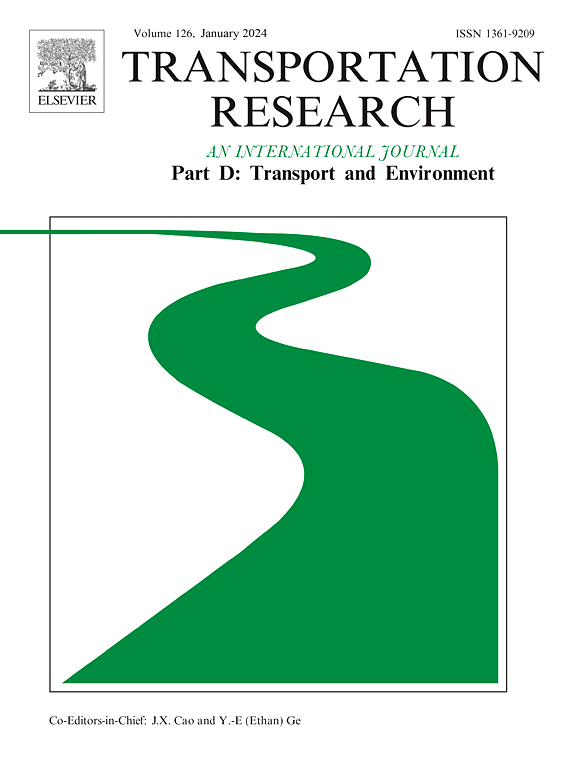揭示链接级街道环境对电动自行车和电动滑板车使用的异质性影响
IF 7.3
1区 工程技术
Q1 ENVIRONMENTAL STUDIES
Transportation Research Part D-transport and Environment
Pub Date : 2024-10-25
DOI:10.1016/j.trd.2024.104477
引用次数: 0
摘要
考虑到电动自行车和电动滑板车不同的空间出行模式,本研究调查了街道环境如何在链路层面影响电动自行车和电动滑板车的流量。我们观察到电动自行车和电动滑板车之间不同的空间出行模式,而且电动滑板车的使用更集中在市中心。与土地使用特征相比,线路设计和网络设计对电动自行车和电动摩托车使用的影响更大。然而,土地使用特征更有可能对这两种交通方式的流量产生不同的影响。具体来说,拥有专用自行车道、交通信号灯、较宽的街道、较高的中心度(intervalness centrality)以及较高的娱乐和办公用地比例的街道,往往会吸引更多的电动自行车和电动摩托车出行。此外,自行车友好型设施,尤其是缓冲自行车道,会产生更明显的影响。研究结果为细微的街道设计指导方针提供了政策含义,以促进电动微型交通的使用。本文章由计算机程序翻译,如有差异,请以英文原文为准。
Uncovering heterogeneous effects of link-level street environment on e-bike and e-scooter usage
This study investigates how the street environment influences e-bike and e-scooter flows at the link level, considering their distinct spatial travel patterns. An angle-based spatial autoregressive quantile regression (SAQR) model is developed to analyze fine-scale street environments in Washington, D.C. We observe distinct spatial travel patterns between e-bikes and e-scooters, and e-scooter usage is more concentrated in city centers. Link design and network design have stronger impacts on the usage of e-bike and e-scooter than land use features. However, land use features are more likely to affect the flow of these two modes differently. Specifically, streets with dedicated bike lanes, traffic signals, wider width, higher betweenness centrality, and a higher proportion of entertainment and office land tend to attract more e-bike and e-scooter trips. In addition, bike-friendly facilities, particularly buffered bike lanes, exhibit more pronounced impacts. The findings provide policy implications for nuanced street design guidelines to facilitate electric micromobility usage.
求助全文
通过发布文献求助,成功后即可免费获取论文全文。
去求助
来源期刊
CiteScore
14.40
自引率
9.20%
发文量
314
审稿时长
39 days
期刊介绍:
Transportation Research Part D: Transport and Environment focuses on original research exploring the environmental impacts of transportation, policy responses to these impacts, and their implications for transportation system design, planning, and management. The journal comprehensively covers the interaction between transportation and the environment, ranging from local effects on specific geographical areas to global implications such as natural resource depletion and atmospheric pollution.
We welcome research papers across all transportation modes, including maritime, air, and land transportation, assessing their environmental impacts broadly. Papers addressing both mobile aspects and transportation infrastructure are considered. The journal prioritizes empirical findings and policy responses of regulatory, planning, technical, or fiscal nature. Articles are policy-driven, accessible, and applicable to readers from diverse disciplines, emphasizing relevance and practicality. We encourage interdisciplinary submissions and welcome contributions from economically developing and advanced countries alike, reflecting our international orientation.

 求助内容:
求助内容: 应助结果提醒方式:
应助结果提醒方式:


